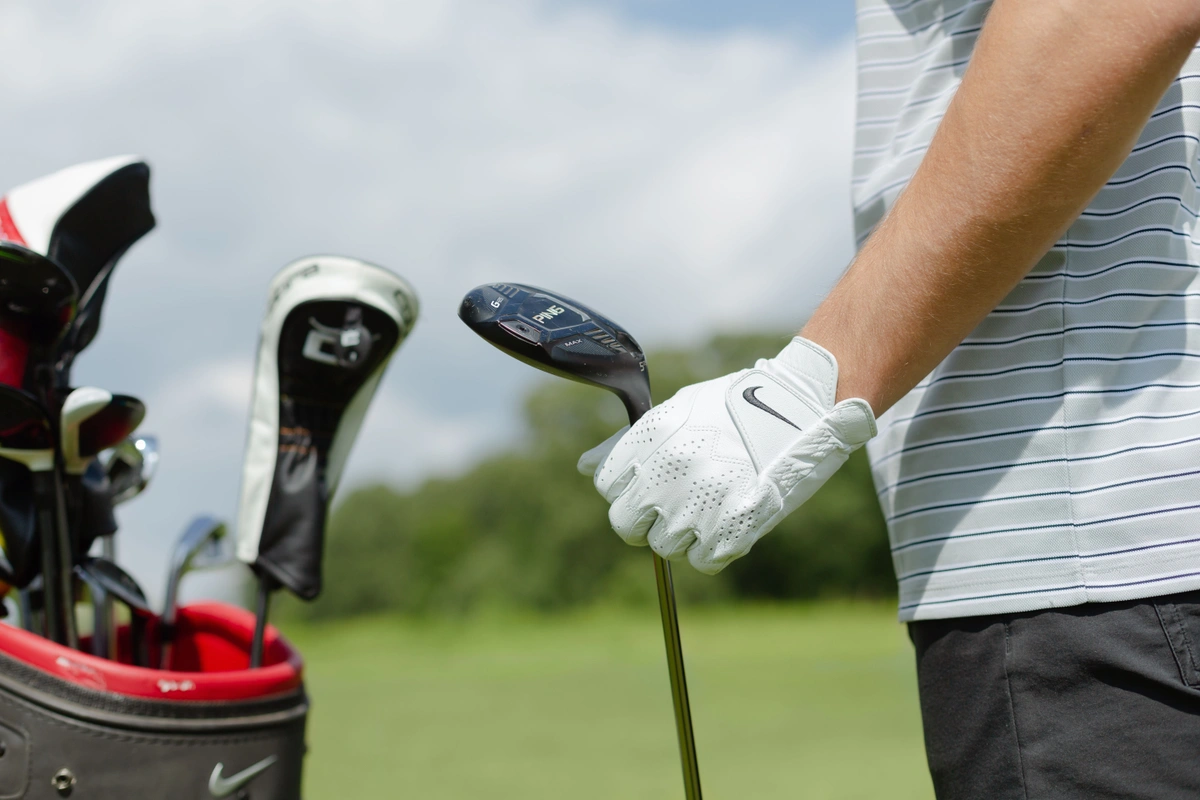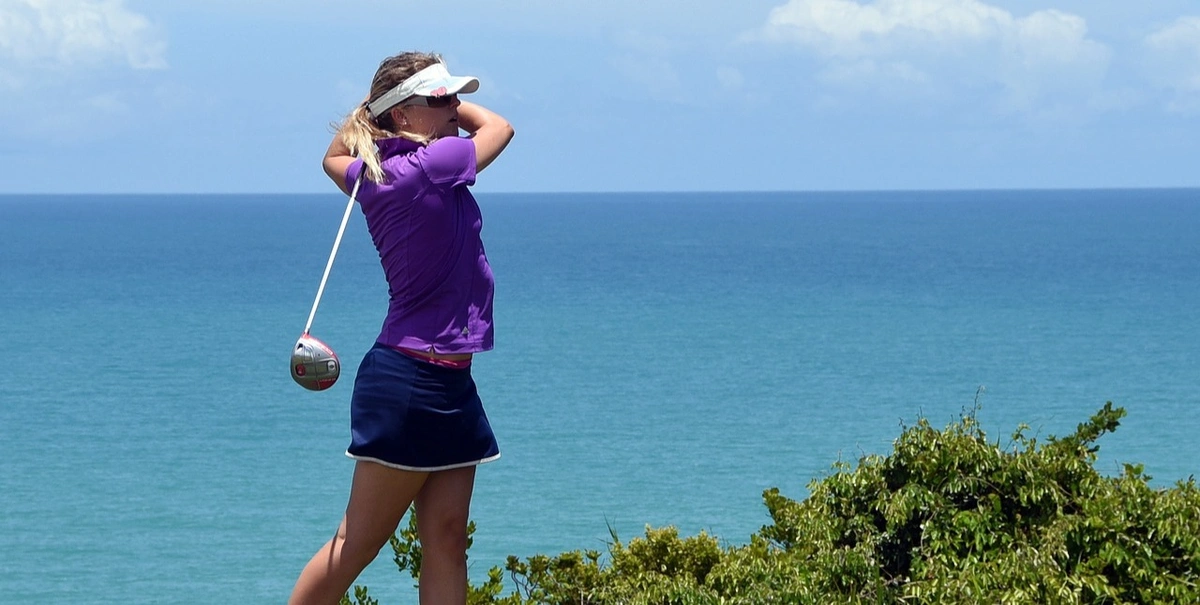
Outside of price, because we know new golf clubs can be expensive, there are some key differences between new and used clubs that should be considered before you buy.

Used clubs can be an excellent option for beginners. I've seen women golfers get a quote for $2500 worth of brand-new golf clubs and find comparable used options to cut that price to just a quarter.

This guide will walk you through the necessary steps to sell your used golf clubs online, from inventory assessment to finalizing the sale.
When shopping for golf clubs for sale, it’s essential to consider how each type can impact your game.
- Golf Club Drivers are designed to deliver maximum distance off the tee. Look for adjustable loft options that let you fine-tune launch angles, as well as lightweight materials like graphite to enhance swing speed. TaylorMade drivers, Callaway drivers, and Ping drivers all offer advanced technologies like adjustable weights and aerodynamic designs to boost distance. If shopping for used golf club drivers, check the shaft flex and grip condition to ensure optimal performance.
- Golf Club Fairway woods are versatile clubs perfect for long-distance shots from the fairway, rough, or even off the tee. Look for a low center of gravity to help get the ball airborne easily, especially from tough lies. Callaway fairway woods, TaylorMade fairway woods, and Cobra fairway woods are known for delivering a combination of power and control. When browsing used fairway woods, inspect the clubface for wear and shaft condition.
- Golf Club Hybrids combine the power of woods with the precision of irons, making them excellent for tricky lies and long approach shots. Look for hybrids with wider soles and lower centers of gravity to promote easy launch and forgiveness. TaylorMade hybrids, Callaway hybrids, and Cobra hybrids offer models with adjustable lofts for versatility. If you’re opting for used golf club hybrids, check for dents or scratches that could impact performance.
- Golf Club Iron sets vary in loft and length to cover different distances, from long irons for powerful shots to short irons for precision. TaylorMade irons and Callaway irons offer more forgiveness for beginners, while Mizuno irons and Titleist irons provide better feel and shot control for advanced players. When shopping for used golf iron sets, inspect the grooves and shaft for wear to maintain accuracy and spin control.
- Golf Club Complete sets are ideal for beginners, providing all essential clubs in a ready-to-use package. If you’re shopping for younger players, consider used junior golf sets, with options for various age groups such as used junior golf clubs 5-8, used junior golf clubs 9-12, and used junior golf clubs 12-14.
- For targeted additions, single irons allow players to fill gaps in their set without purchasing an entirely new set.
- Golf Cub Wedges are crucial for short-game precision, with options like pitching, sand, and lob wedges for specific shot types and bunker play.
- Golf Club Putters come in various head shapes and weighting options, so consider what feels most balanced and aligns well for accurate putting.
- Golf Club heads should be selected based on preferred material (steel, titanium, composite) and desired shot trajectory.
Popular golf brands known for quality and performance include Callaway, TaylorMade, Titleist, Ping, and Cobra.
Flex and material are two key factors to consider when buying a golf shaft. Flex affects how much the shaft bends during a swing, impacting both distance and accuracy. Players with faster swing speeds typically benefit from stiffer shafts, while those with slower swings may find more control with regular or senior flex options. Shopping for used golf shafts for sale can be a smart way to test different flex ratings without the commitment of a brand-new shaft.
Material also plays a crucial role in shaft performance. Graphite shafts are lighter and more flexible, ideal for generating speed and distance, while steel shafts provide greater stability and control for precise shots. Opting for preowned golf shafts allows golfers to try out various materials at a lower cost, making finding the right combination of flex and feel easier.
Choosing the right golf grip can greatly impact control, comfort, and swing consistency. Rubber grips are the most common, offering durability and shock absorption, making them ideal for all skill levels. For extra traction, especially in wet conditions, corded grips from brands like Marker and Super Stroke feature woven material for a firmer feel. Players seeking a cushioned, leather-like feel may prefer wrap grips, while synthetic/polyurethane grips provide a softer, tackier surface, often used in putters.
Grip texture and design also vary. Smooth grips offer a tacky, relaxed feel, while ribbed grips include a raised ridge for consistent hand placement. Tapered grips gradually decrease in thickness to encourage natural hand positioning, while non-tapered grips maintain uniform thickness to reduce wrist tension. Hybrid grips combine corded texture for control and smooth rubber for comfort, making them versatile options.
Specialty grips include putter grips, available in various shapes to enhance control, and counterbalanced grips, which add weight for increased stability. Arthritic grips are thicker and softer to reduce hand strain.
There are many different types of golf bags available to fit any golfer. Whether a golfer wants a carry bag or a standing cart bag, buying used is a low-cost option for top-quality brands. Even high-end bags can be found at a good price by buying vintage or second-hand.
If a golfer plans to walk, a lightweight bag, such as the Callaway HyperLite Zero, which weighs less than 3 lbs., might be a good choice. A cart bag, like the Sun Mountain C130, would be designed specifically for golfers who prefer not to carry. Varied designs in many colors allow for individual taste in golf bags for men, women, and juniors.
When shopping for golf shoes, comfort and traction are key. Look for shoes with cushioned insoles and breathable uppers. Waterproof materials are also a must for wet or dewy conditions.
Spiked golf shoes offer superior grip on wet or uneven terrain, making them ideal for players who need maximum stability during swings. For a more casual feel, spikeless shoes provide versatile traction with rubber soles that can transition from the course to the clubhouse.
Opt for shoes with adjustable laces or BOA systems to ensure a secure, custom fit. Proper arch support and ankle padding can help prevent foot fatigue and enhance overall performance. For quality options, consider top brands like FootJoy, Adidas, and Nike known for combining comfort, durability, and style in their golf shoe designs.
When choosing golf balls, consider compression, spin, and cover material. Low-compression balls are ideal for beginners or players with slower swing speeds, providing more distance and a softer feel. In contrast, high-compression balls are designed for faster swing speeds, offering greater control and precision.
Spin also plays a significant role. Low-spin balls reduce side spin for straighter shots, making them great for beginners, while high-spin balls provide more control around the greens, allowing advanced players to execute precise shots. Cover material matters too – urethane covers offer a soft feel and increased spin control, while ionomer covers provide durability and distance.
Popular brands like Titleist, Callaway, TaylorMade, Bridgestone, and Srixon offer a wide range of golf balls tailored to various swing speeds, skill levels, and playing conditions.





